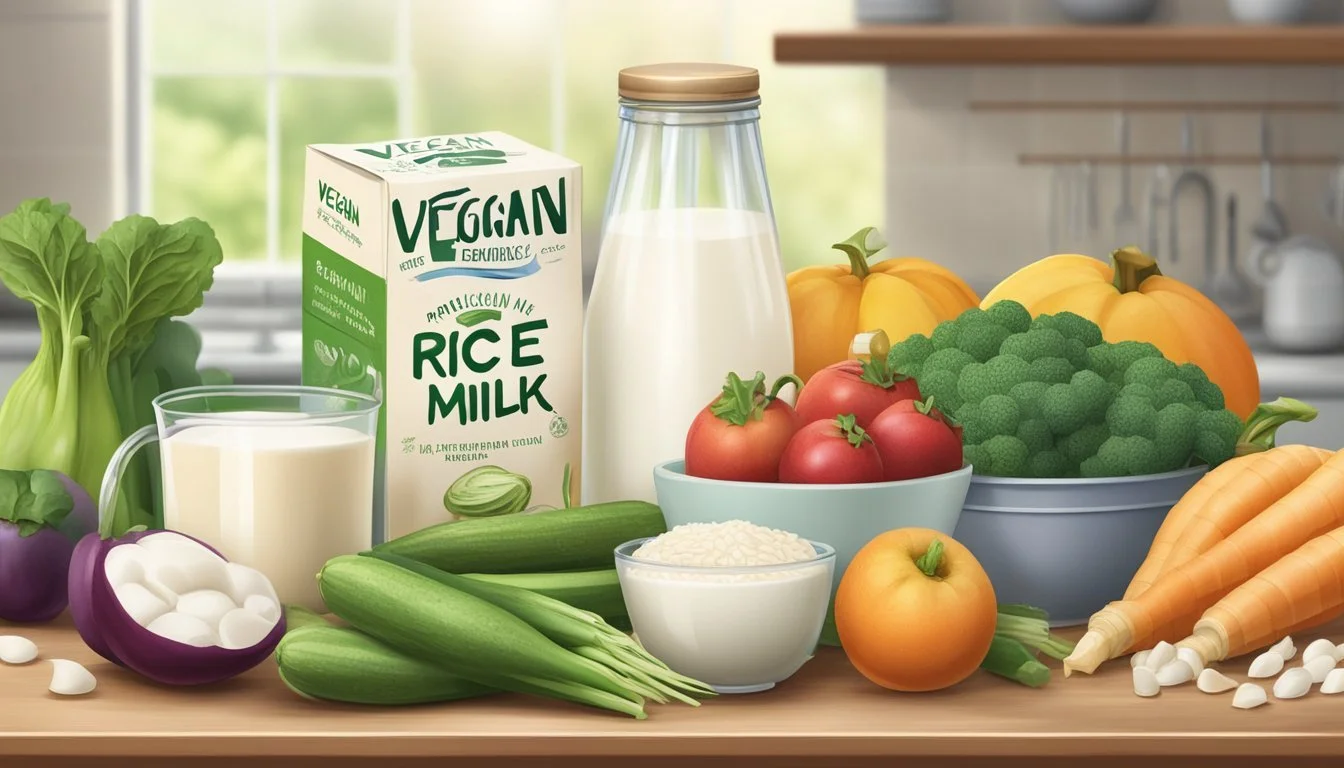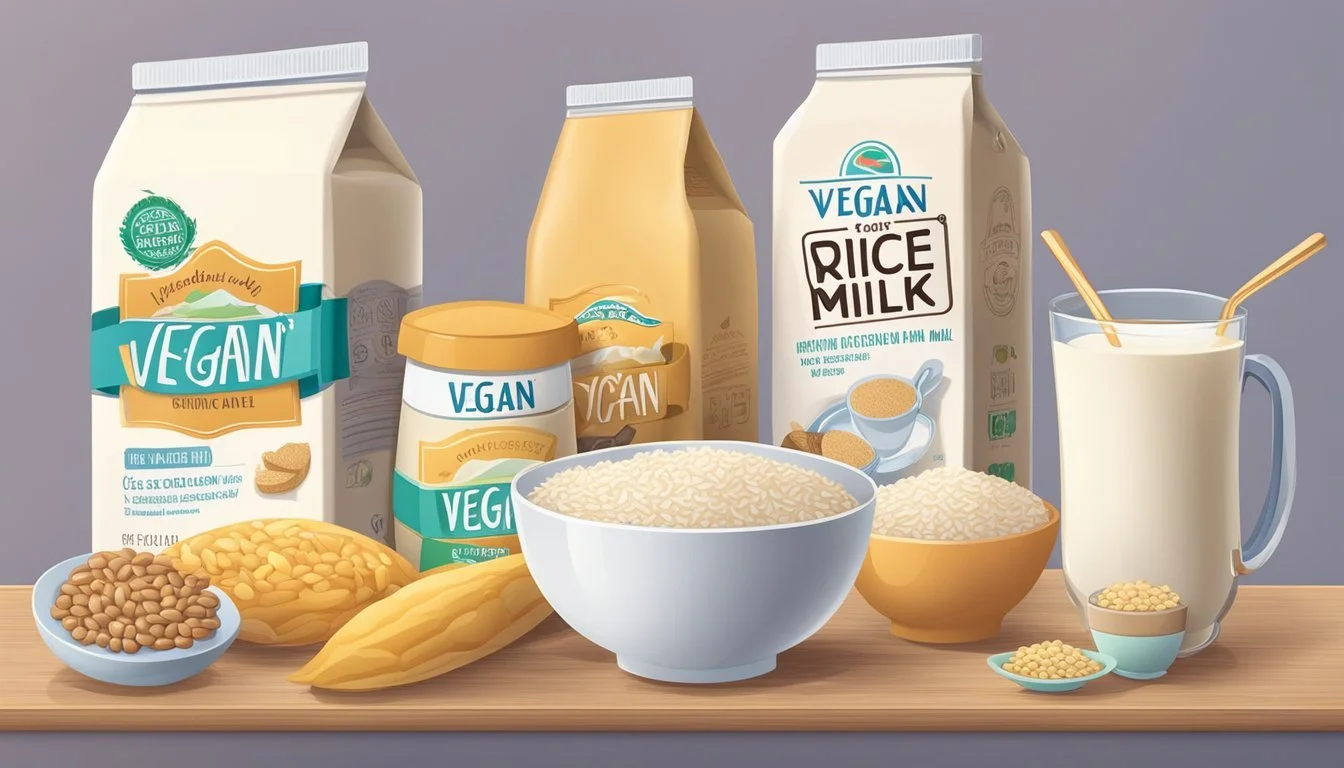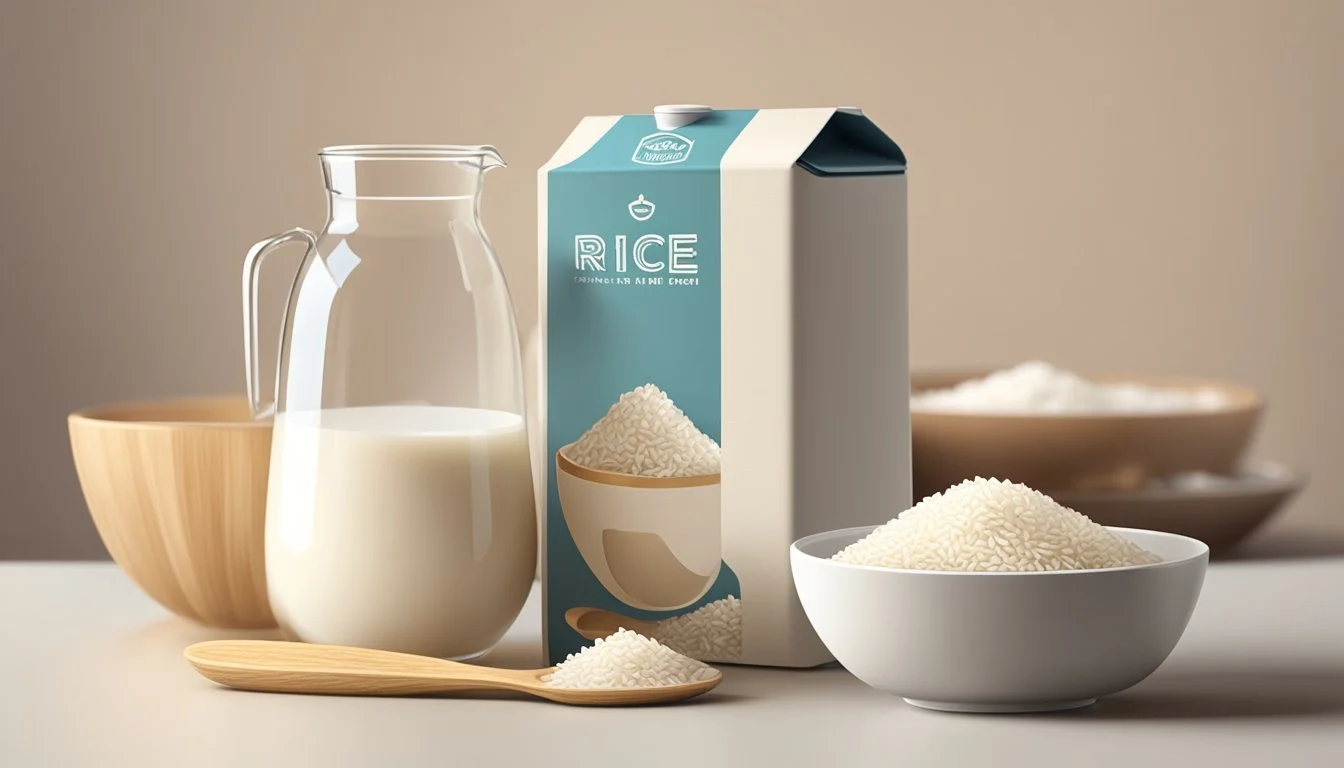Is Rice Milk Vegan?
Understanding Plant-Based Milk Alternatives
Rice milk is a plant-based milk derived from milled rice and water. It stands as a popular choice among vegans and those with dietary restrictions or preferences that exclude animal products. As a vegan beverage, rice milk contains no animal derivatives, aligning with a vegan diet that omits all forms of animal exploitation and cruelty for food, clothing, or any other purpose. It is particularly favored for its hypoallergenic properties, making it a safe option for individuals allergic to dairy, soy, nuts, or gluten.
The vegan community often seeks alternatives to dairy milk that maintain a similar nutritional profile. While rice milk is naturally low in protein and other nutrients when compared to cow's milk, fortified options are available. Manufacturers typically enrich rice milk with vitamins and minerals such as calcium, vitamin A, and vitamin D to resemble the nutritional content of dairy milk more closely. Hence, consumers opting for rice milk should be mindful of choosing fortified versions to compensate for nutrients that are abundantly present in dairy milk but lacking in unfortified rice milk.
Rice milk's mild flavor and thinner consistency make it versatile for cooking and baking, as well as for consumption on its own or with cereal. Although rice milk tends to be sweeter and less creamy than some other plant-based milks, it is still embraced for its unique qualities and the fact that it is a viable vegan milk alternative, contributing to the diversity of plant-based options on the market.
What Is Rice Milk?
Rice milk emerges as a plant-based milk alternative that is particularly suitable for vegans, consisting of grains of rice and water as its primary constituents.
Defining Rice Milk
Rice milk is a type of plant milk made by blending rice—either brown or white—with water. The mixture is then strained to produce a liquid that resembles traditional dairy milk in appearance. It is a vegan milk as it solely relies on plant sources, devoid of any animal products or byproducts.
Origins and Types
Historically, rice milk has been used in various cultural cuisines. Today, it is widely embraced as a plant-based milk alternative catering to those seeking dairy-free options. It comes in different forms such as sweetened, unsweetened, flavored, and fortified with additional vitamins and minerals to enhance its nutritional value.
Rice Varieties as a Base
The two primary rice varieties used as a base for rice milk are brown rice and white rice. Brown rice is considered a whole grain and retains its bran and germ, offering more fiber and nutrients. In contrast, white rice has the bran and germ removed, resulting in a lighter flavor and texture. Both types can produce a milk that is lactose-free and hypoallergenic, making it a reliable choice for those with dietary restrictions.
Nutritional Profile
Rice milk's nutritional profile is distinctive, offering a unique balance of macros for those who opt for plant-based diets or have dietary restrictions. It is typically lower in protein and minerals compared to other milks, but it is also naturally free from animal products.
Macro and Micro-Nutrients
Rice milk primarily consists of carbohydrates, averaging around 120 calories and 23 grams of carbohydrates per cup. It is low in protein, typically offering only about one gram per cup. The fat content is relatively low too, with about 2.5 grams per serving. As for micro-nutrients, rice milk is naturally devoid of significant amounts of calcium, iron, and essential vitamins found abundantly in dairy milk.
Comparing Rice Milk to Other Plant Milks
Compared to other plant-based milks, rice milk has a higher carbohydrate content but significantly less protein. For instance:
Almond milk: Often lower in calories and carbohydrates but higher in vitamin E.
Soy milk: Contains more protein closely resembling that of cow's milk.
Oat milk: Similar in carbohydrates but usually provides more fiber.
Coconut milk: Higher in saturated fat and distinct coconut flavor.
Cashew milk: Contains healthy fats and typically lower in calories.
Each type of nut milk offers its own nutritional benefits and is chosen by consumers based on dietary needs, flavour preferences, and nutritional goals.
Fortification of Rice Milk
Rice milk is often fortified with nutrients to improve its nutritional value. It is commonly enriched with:
Calcium: To support bone health.
Vitamin D: Important for calcium absorption and bone health.
Vitamin B12: An essential vitamin not naturally found in plant-based foods.
The fortification helps rice milk become a more nutritionally complete beverage, making it a suitable alternative for those avoiding animal products or with allergies to other nut milks.
Benefits of Rice Milk
Rice milk, as a plant-based alternative to dairy milk, offers several advantages for individuals looking for vegan, lactose-free, and allergen-friendly options. It is particularly beneficial for those with dietary restrictions or intolerances, catering to a diverse range of nutritional needs and lifestyle choices.
Dietary Inclusion
For individuals following a vegan diet, rice milk provides a beverage free from animal products, aligning with their ethical and dietary principles. It's an inclusive option, making it an essential part of a dairy-free pantry. As rice milk is fortified with essential nutrients, it can contribute to the overall health benefits sought by those on a vegan diet.
Allergy Considerations
Rice milk is an excellent choice for those with allergenic concerns, particularly sensitivities to soy, nuts, and dairy. It is one of the least allergenic options, reducing the risks that come with common food allergens. Its hypoallergenic nature makes it suitable for both children and adults who are managing food-related allergies.
Digestive Health Advantages
For those who are lactose intolerant or have difficulty digesting lactose, rice milk offers considerable digestive health advantages. As a naturally lactose-free alternative, it eliminates the discomfort typically associated with lactose consumption, which includes bloating, gas, and abdominal pain. Its easily digestible qualities make rice milk a gentle option for the digestive system, and it proves especially advantageous for lactose-intolerant individuals seeking nourishing beverages that won't upset their stomach.
Rice Milk Creation
Rice milk is created through a process of blending rice with water and typically involves either commercial methods or homemade practices. Both approaches aim to produce a dairy-free milk alternative suitable for vegans and those with dietary restrictions.
Commercial Manufacturing
In the commercial manufacturing of rice milk, the production process begins by milling the rice to break down its structure. Water is then mixed with the milled rice, often alongside additional ingredients to enhance the flavor and nutritional content.
Key Ingredients: Milled brown or white rice, water
Common Additives: Vegetable oil for richness, vitamins such as B12 and D, calcium, and sometimes a sweetener such as sugar
Texture and Consistency: Achieved through thickeners and emulsifiers
Sweetener: Some brands add sugar or another sweetener to enhance taste
Prep Time: Industrial-scale production optimizes for efficiency
The focus in commercial settings is on consistency, shelf-stability, and meeting dietary needs, such as being lactose- and allergen-free.
Homemade Rice Milk Recipes
Creating rice milk at home enables customization of ingredients and the avoidance of preservatives. The recipe typically requires minimal ingredients and simple equipment.
Basic Ingredients: Cooked rice, water, vanilla extract (optional), salt (optional)
Sweeteners: The use of sugar or other sweeteners is at the maker's discretion
Equipment Needed: A high-speed blender for smooth consistency
Straining Tools: Nut milk bag or cheesecloth is recommended for straining
Rice: Both leftover rice or freshly cooked rice may be used
Prep Time: Approximate prep time can range from a few minutes for blending to several hours if including cooking time for the rice
The steps for making rice milk at home typically involve blending the cooked rice with water until smooth, then straining the mixture to achieve the desired milk-like consistency. Adding oil can help replicate the richness found in commercial varieties, but it is optional.
Taste and Culinary Uses
Rice milk, known for its mild taste, serves as an adaptable beverage that complements a variety of ingredients and dishes. It can be enhanced with vanilla or sweeteners and applied in countless recipes in place of dairy milk.
Flavor Profile
The flavor of rice milk is notably mild and slightly sweet, making it a neutral base in the culinary world. Many prefer to amplify its taste by adding vanilla or a preferred sweetener, such as syrup, to match their palate. The subtlety of its flavor ensures that it doesn't overpower other components in a dish.
Rice Milk in Cooking and Baking
In cooking and baking, rice milk excels due to its unobtrusive flavor. It can be incorporated into:
Baked goods: Enhances moisture without altering taste.
Desserts: Ideal in recipes like rice pudding or granola bars.
Smoothies: Offers a light consistency.
Sauces: As a thickener without adding a heavy dairy element.
Chefs and home cooks use it as a nutritious dairy alternative, mindful of its lower protein content compared to other plant-based milks.
Pairing with Other Ingredients
Rice milk pairs well with a range of ingredients and seasonings. It can be enjoyed with:
Cinnamon: For a warming beverage or oatmeal topping.
Fruits: Blends seamlessly into smoothies.
Cereals: Complements without overwhelming flavors like in oatmeal or cereal bowls.
Its versatility and compatibility make rice milk a favored non-dairy choice for both sweet and savory applications.
Comparison to Dairy Milk
Rice milk offers a plant-based alternative to dairy milk, presenting distinct differences in nutritional composition and ethical considerations, which are of particular interest to vegans and those seeking dairy-free options.
Nutritional Differences
When comparing rice milk to cow's milk, one notices significant nutritional discrepancies. Cow's milk is known for its high protein content and natural calcium, vital for bone health. A typical cup of cow's milk contains around 8 grams of protein and is often fortified with vitamin D to enhance calcium absorption. On the other hand, rice milk contains minimal protein, generally less than 1 gram per cup. Furthermore, it's often fortified with calcium and vitamin D to match the benefits provided by dairy milk.
Nutrient Rice Milk (1 cup) Cow's Milk (1 cup) Protein < 1g 8g Calcium Fortified amounts Naturally occurring Vitamin D Fortified amounts Fortified amounts
Ethical and Dietary Considerations
For vegans and individuals with dietary restrictions, such as lactose intolerance, rice milk serves as a suitable milk substitute. It is entirely plant-based, making it a vegan milk option free from animal products and byproducts. Ethically, it aligns with a vegan's commitment to avoid animal exploitation. Rice milk also accommodates those who are dairy-free, providing a beverage free from lactose and dairy proteins, which can cause allergic reactions in sensitive individuals. While cow's milk production raises concerns regarding animal welfare and environmental impact, rice milk offers a more sustainable and ethical alternative for those who prioritize such issues.
Practical Aspects of Rice Milk
In examining rice milk, understanding its storage protocol and economic benefits is crucial to appreciating its practical value, particularly for consumers valuing vegan alternatives.
Storage and Shelf Life
Rice milk should be stored in a refrigerator immediately after opening to maintain its quality and freshness. The optimal storage temperature lies within the typical fridge range of 35°F to 38°F (1.7°C to 3.3°C). An unopened container has a shelf life that mirrors the expiration date provided by the manufacturer, but once opened, rice milk should be consumed within 4 to 7 days for best taste and safety. To extend freshness, one should ensure the container's lid is sealed tightly after each use, limiting exposure to air which can compromise the product's consistency and flavor.
Economic Considerations
Manufactured rice milk is generally considered an inexpensive dairy-free alternative. For cost-conscious consumers, making rice milk at home can further save money, particularly when using bulk-purchased rice and filtered water as primary ingredients. Economically, homemade rice milk requires minimal ingredients and equipment - cooked rice, filtered water, and a blender are the essentials. This simple process, which leverages inexpensive and widely available components, opens the door to cost savings for individuals and families incorporating plant-based milks into their diets.
Potential Drawbacks and Considerations
While rice milk is a valid vegan milk alternative, consumers should be aware of its nutritional profile which might not align with everyone's dietary needs. Here are some specific considerations regarding the nutritional content and composition of rice milk.
Caloric and Sugar Content
Rice milk typically has a higher carbohydrate content that translates into calories and sugar. For example, 100 grams of unsweetened rice milk may contain:
Calories: 47
Carbohydrates: 9g
Added Sugar: Some brands may add sugar, increasing caloric content.
Consumers looking to manage their calorie or sugar intake should examine rice milk labels for added sugars.
Absence of Certain Nutrients
Nutrients naturally present in cow's milk are often not inherently found in rice milk, including:
Protein: Rice milk commonly provides only about 0.3g per 100g, significantly less than cow's milk.
Calcium: Not inherent in rice milk but often added during the fortification process.
Vitamins and Minerals: Essential elements like Vitamin A and certain minerals may be lacking unless the rice milk is fortified.
Consumers relying on rice milk as a milk substitute may need to source these nutrients from other foods or supplements.
Additives and Preservatives
To enhance consistency and shelf life, manufacturers may include:
Thickeners: Such as carrageenan or xanthan gum, to improve texture.
Preservatives: To prevent spoilage and extend shelf life.
While these additives are commonly used, some individuals may wish to avoid them and should read labels carefully to choose the most suitable product for their dietary preferences.





